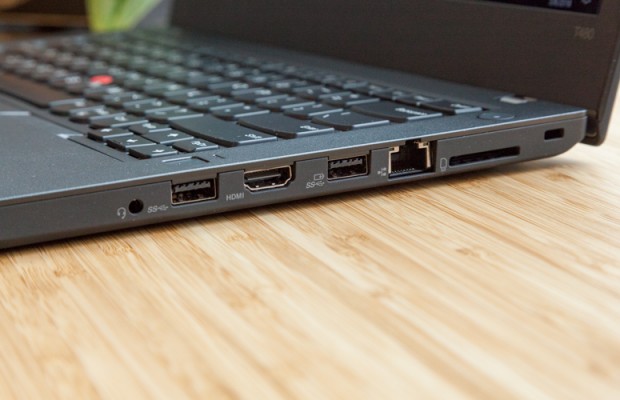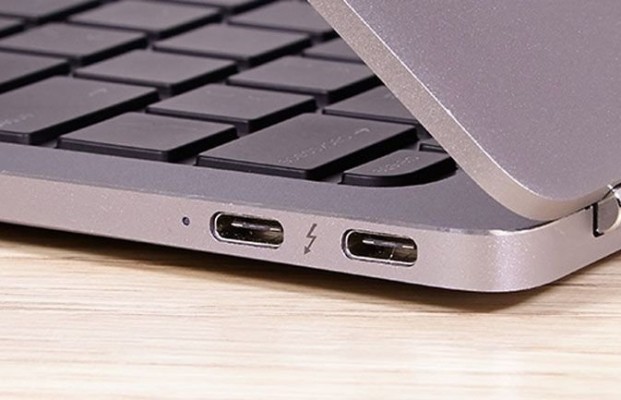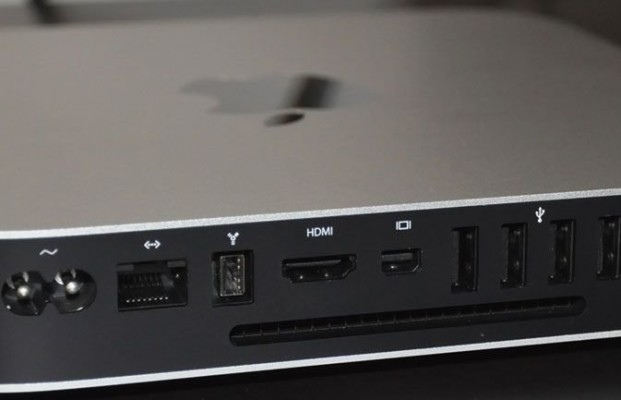These Are the Ports You Need on Your Next Laptop
If you've made the decision to purchase a new laptop, there are a few things to consider before you hit the buy button. Yeah, you'll need to look at the CPU, GPU, RAM and storage, as all those specs are vitally important in their own right. But there's something else to consider.
I'm talking about the ports — you know, those holes along the sides that let you plug in all your shiny peripherals. You don't want to get a system that's sporting an old-school USB when what you really want and need is Thunderbolt 3. Here are the essential ports to consider when purchasing a new laptop.
USB 3.1
Not to be confused with USB 3.0 or even 2.0, USB 3.1 is the latest standard for USB Type-A ports. This is the big rectangle port you plug your mouse, USB headset or external hard drive into. USB 3.1 launched back in 2013 and offers some serious transfer speeds — up to 10 gigabits per second. To put that into perspective, USB 3.0 and 2.0 deliver speeds of 5 Gbps and 480 Mbps, respectively.
But not so fast! The USB Implementers Forum, a nonprofit group that promotes the use of the technology and creates compliance standards, declared that USB 3.0 is now called USB 3.1 Gen 1, while the 10-Gbps version is Gen 2. So how do you tell the two ports apart? Honestly, you're going to have to look at the specs, where manufacturers should mention the speed. But USB 2.0 ports are typically gray, whereas USB 3.0 and higher are blue.
USB Type-C
As laptops have gotten thinner, not all of them can support a port as large as USB Type-A. Enter USB Type-C. This slim, 0.3 x 0.1-inch port is gracing the sides of many laptops, as well as the bottoms of many popular smartphones, nowadays.
Sign up to receive The Snapshot, a free special dispatch from Laptop Mag, in your inbox.
As a USB 3.1 port, Type-C is capable of transfer speeds of 10 Gbps and can deliver up to 100 watts of power, which comes in handy for powering laptops. The port is also bidirectional, allowing a peripheral like a Razer Power Bank to charge a notebook. And while there are Type-A-to-Type-C connectors, a cord with Type-C on both ends means you never have to fumble for the "right" end, since Type-C is reversible.
Thunderbolt 3
At first glance, you might mistake a Thunderbolt 3 port for a USB Type-C port, and technically, you'd be right. While all Thunderbolt 3 ports can function as a USB Type-C, standard Type-C ports can't do the work of a Thunderbolt 3. Type-C can hit transfer speeds of 10 Gbps, but Thunderbolt 3 can hit a blistering speed of 40 Gbps, provided that the cable is no longer than 1.6 feet. If the cable is longer than that, the speed drops to 20 Gbps, which is still plenty fast.
Just like Type-C, Thunderbolt 3 is reversible and bidirectional when it comes to power flow. However, unlike Type-C, Thunderbolt 3 can daisy-chain, which means you can attach a variety of devices together, provided they all have this oh-so-important port.
Headset
Depending on the laptop, you might find individual jacks for headphones, a microphone and S/PDIF and audio-out. But most notebooks have condensed all those jacks into a handy-dandy multitasker known as the headset jack. Also referred to as a combination headphone/microphone jack, the humble 3.5mm audio jack pulls triple duty, supporting functions for both devices in addition to speaker-out, which allows you to connect external speakers.
HDMI
Sometimes you want bigger screen real estate than your notebook can provide. But to move on to bigger and better panels, you'll need an HDMI port. Short for High-Definition Multimedia Interface, HDMI allows your laptop to transmit compressed or uncompressed audio and visual data over a single cord. It's that weird polygonal-shaped port that you'll also find on the back of your television, game consoles and cable boxes. And if you're a fan of virtual reality, you'll need HDMI to support your Oculus Rift, HTC Vive or Windows Mixed Reality Headset.
Over the years, several iterations of HDMI ports have come in and out of favor. Currently, most laptops have either an HDMI 1.4 or 2.0 port. The 1.4 version supports 4K (3840 x 2160) content at 24, 25 and 30 Hz as well as full HD (1920 x 1080) at 120 Hz. It also supports a number of 3D formats, as well as the Adobe RGB color gamut.
HDMI 2.0 takes 1.4 a bit further and supports 4K content running at 60 Hz and improved 3D formatting. The format is compatible with high dynamic range (HDR), which allows for extremely vivid images on HDR-ready displays. It also increases bandwidth, upping the transfer rate from 10.2 Gbps to 18 Gbps.
MORE: USB Type-C FAQ
HDMI 2.0 can also maintain dual video streams to the same panel, which would allow several people to watch two different things simultaneously in split-screen mode — think of picture-in-picture mode, but better. The technology can also transmit 32 audio channels, which is a significant boost from HDMI 1.4's eight, and opens the door to Dolby Atmos compatibility. That means that, with the right home theater setup, you can create cinema-grade, 3D audio in your home.
HDMI version 2.1 was announced in 2017 but has yet to make the leap to most TVs, let alone laptops. Thanks to a bit of future-proofing, HDMI 2.1 will support even higher resolutions, including 8K and even 10K.
Credit: Laptop Mag

Sherri L. Smith has been cranking out product reviews for Laptopmag.com since 2011. In that time, she's reviewed more than her share of laptops, tablets, smartphones and everything in between. The resident gamer and audio junkie, Sherri was previously a managing editor for Black Web 2.0 and contributed to BET.Com and Popgadget.





